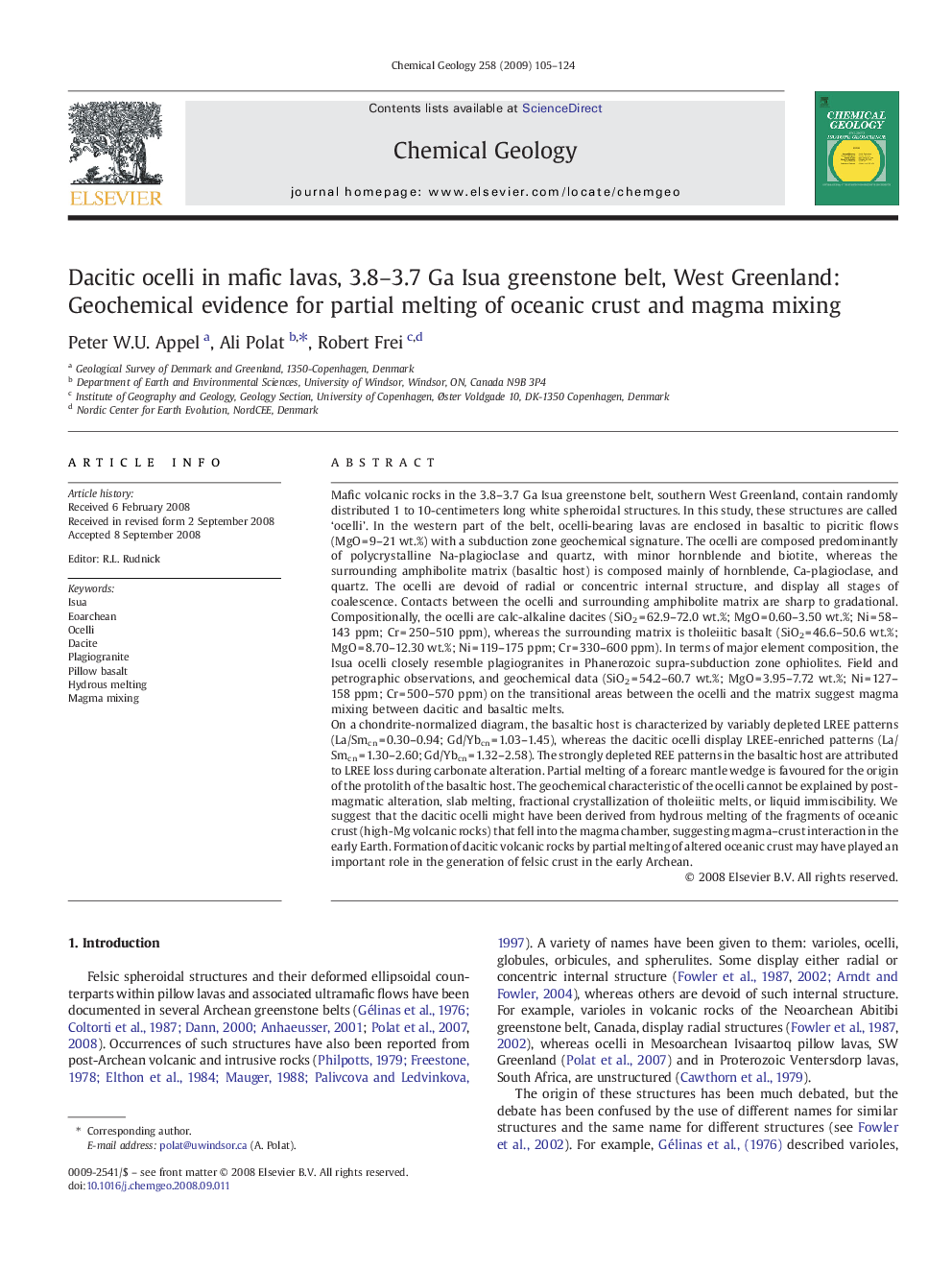| Article ID | Journal | Published Year | Pages | File Type |
|---|---|---|---|---|
| 4700415 | Chemical Geology | 2009 | 20 Pages |
Abstract
On a chondrite-normalized diagram, the basaltic host is characterized by variably depleted LREE patterns (La/Smcn = 0.30-0.94; Gd/Ybcn = 1.03-1.45), whereas the dacitic ocelli display LREE-enriched patterns (La/Smcn = 1.30-2.60; Gd/Ybcn = 1.32-2.58). The strongly depleted REE patterns in the basaltic host are attributed to LREE loss during carbonate alteration. Partial melting of a forearc mantle wedge is favoured for the origin of the protolith of the basaltic host. The geochemical characteristic of the ocelli cannot be explained by post-magmatic alteration, slab melting, fractional crystallization of tholeiitic melts, or liquid immiscibility. We suggest that the dacitic ocelli might have been derived from hydrous melting of the fragments of oceanic crust (high-Mg volcanic rocks) that fell into the magma chamber, suggesting magma-crust interaction in the early Earth. Formation of dacitic volcanic rocks by partial melting of altered oceanic crust may have played an important role in the generation of felsic crust in the early Archean.
Related Topics
Physical Sciences and Engineering
Earth and Planetary Sciences
Geochemistry and Petrology
Authors
Peter W.U. Appel, Ali Polat, Robert Frei,
